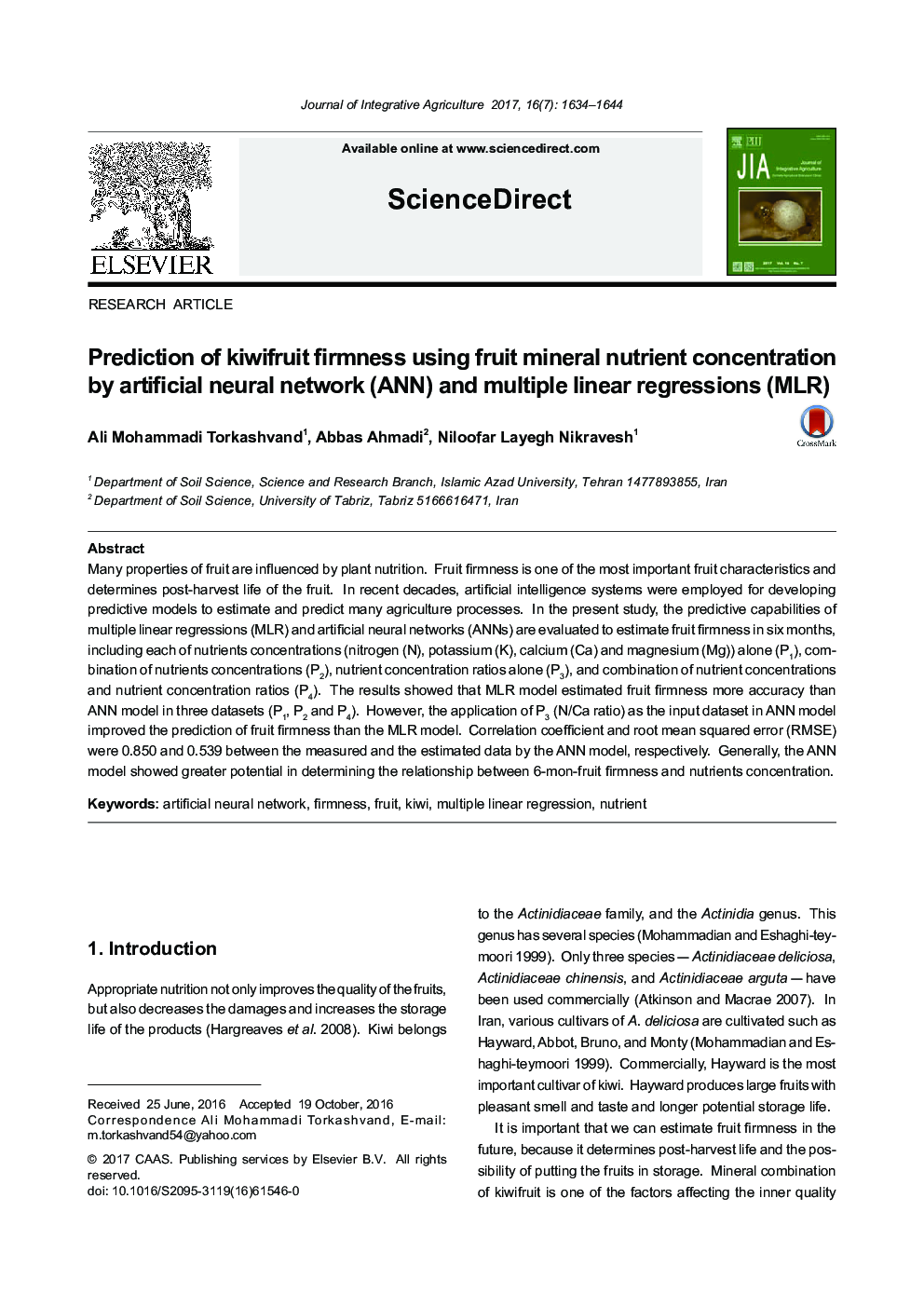| Article ID | Journal | Published Year | Pages | File Type |
|---|---|---|---|---|
| 8875951 | Journal of Integrative Agriculture | 2017 | 11 Pages |
Abstract
Many properties of fruit are influenced by plant nutrition. Fruit firmness is one of the most important fruit characteristics and determines post-harvest life of the fruit. In recent decades, artificial intelligence systems were employed for developing predictive models to estimate and predict many agriculture processes. In the present study, the predictive capabilities of multiple linear regressions (MLR) and artificial neural networks (ANNs) are evaluated to estimate fruit firmness in six months, including each of nutrients concentrations (nitrogen (N), potassium (K), calcium (Ca) and magnesium (Mg)) alone (P1), combination of nutrients concentrations (P2), nutrient concentration ratios alone (P3), and combination of nutrient concentrations and nutrient concentration ratios (P4). The results showed that MLR model estimated fruit firmness more accuracy than ANN model in three datasets (P1, P2 and P4). However, the application of P3 (N/Ca ratio) as the input dataset in ANN model improved the prediction of fruit firmness than the MLR model. Correlation coefficient and root mean squared error (RMSE) were 0.850 and 0.539 between the measured and the estimated data by the ANN model, respectively. Generally, the ANN model showed greater potential in determining the relationship between 6-mon-fruit firmness and nutrients concentration.
Related Topics
Life Sciences
Agricultural and Biological Sciences
Agricultural and Biological Sciences (General)
Authors
Ali Mohammadi Torkashvand, Abbas Ahmadi, Niloofar Layegh Nikravesh,
